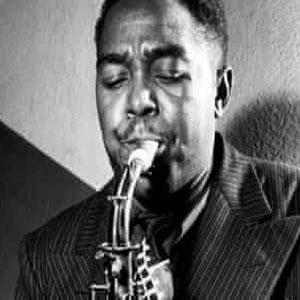Categories: Music History
Charlie Parker has a cymbal thrown at him
 0ne night in 1937, a teenage musician called Charlie Parker joined a queue of players waiting to jam onstage at Kansas City's Reno Club. It was a special occasion. A star guest in the rhythm section was Jo Jones, drummer for Count Basie's Orchestra, one of the biggest swing bands in the US.
0ne night in 1937, a teenage musician called Charlie Parker joined a queue of players waiting to jam onstage at Kansas City's Reno Club. It was a special occasion. A star guest in the rhythm section was Jo Jones, drummer for Count Basie's Orchestra, one of the biggest swing bands in the US.
Charlie Parker thought his moment had come, 16 years old or not. He had been practicing an improv method of his own, deploying keys rarely used in jazz tunes, and modulating between them to free up new ways of phrasing – and he'd bought a new Selmer saxophone. When his turn came, he blew a chorus over the chords of I Got Rhythm that Jones, to judge by the warming of his wave-like cymbal sound, seemed to like. Then Parker introduced a passing chord, improvised fluently in a new key, and sensed the audience's and the band's intrigued surprise.
But now he'd left the world he knew. A college-trained musician could have called out the next chord to him in an instant, but Parker was a high school dropout making it up for himself. While Jones's pulse surged on behind him, the teenager lost the tune, and then the beat. Jones stopped, and Parker froze, clutching his gleaming new saxophone. Jones contemptuously threw a cymbal at his feet, and the reverberations were followed by the sound of laughter and catcalls. Ross Russell, Charlie Parker's biographer, has the teenager leaving the club saying to himself, "I'll be back" and he kept his promise – not only returning to square things with doubters, but to show everybody with an open mind and open ears a new kind of 20th-century music-making.
Charlie Parker (nicknamed "Yardbird" or usually just "Bird" in the jazz world) was the JS Bach of jazz; an instinctive master of complex harmony with a dizzying melodic ingenuity to match, who became a messiah to the hipster and beat poetry generation of the late 1940s and early 50s. When he died – broke and broken down by self-neglect and dangerous addictions – at the age of only 34, graffiti artists scrawled "Bird Lives!" on Harlem walls.
He was born in Kansas City in 1920 and raised by a devoted single mother, Addie. She gave her son his first sax when he was 13, and the following year Charlie was hanging out in the city's clubland listening to his saxophone hero Lester Young and others while Addie was at work as a night cleaner. He mostly skipped formal education, but schooled himself on the saxophone with Young as his model. He learned to play in every key because he didn't know jazz musicians only used a few – and with a little help from some older Kansas musicians, figured out how to shift between keys within solos. In 1939 (a couple of years after the Reno Club nightmare and already married, divorced, the father of a son, and struggling with a drugs and booze habit that had begun in his teens), Parker joined Jay McShann's band and stayed with them until 1942.
At Minton's Playhouse, a Harlem jamming joint, Parker met such like-minded young swing dissidents as drummer Kenny Clarke, former church pianist Thelonious Monk, Benny Goodman's star guitarist Charlie Christian and the harmonically advanced trumpeter John Birks "Dizzy" Gillespie. In the small hours at Minton's, bebop, or just bop, was forged.
To unprepared musicians and audiences, bop could sound at first as if soloists had arrived in the wrong places, forgotten to resolve phrases, used chords too stacked with extra notes to play on, and perversely accented traditionally weak beats instead of strong ones. Many established stars, including Louis Armstrong, hated it. But bop was eventually recognised as a natural progression from the jazz that had gone before. From 1944 on, partnered by Gillespie and, later, by a teenage Miles Davis, Parker created some of the most dynamic jazz in the music's history, with tunes such as Now's the Time, Ornithology, Billie's Bounce, Yardbird Suite and Ko-Ko often scribbled on scraps of paper on the way to sessions, or during warm-ups.
Some fans felt that bop shifted jazz away from dance music to highbrow art, but with rock'n'roll around the corner, that was inevitable – and what was often regarded as a cerebral and wilfully complex music back then sounds as natural as whistling now. Some played bop blues-drenched and impassioned like Parker; some played it quiet and cool, like pianist Lennie Tristano and saxophonists Lee Konitz and Warne Marsh. It could be dissected and juggled, as practised by Ornette Coleman, or it could turn up in the rock music of Frank Zappa or Steely Dan. Contemporary players, such as American saxophonist Joe Lovano or British pianist Django Bates, can revisit Parker's timeless themes in ways that cherish the tradition while being totally fresh. That defiant proclamation "Bird Lives!" is as true now as it was in 1955..

